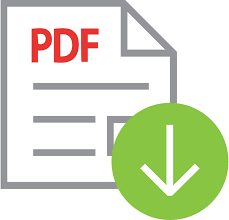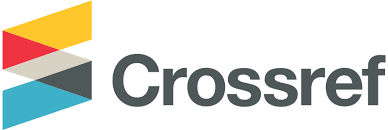Maxim of Politeness in Sending Message from Students to the Lecturers via WhatsApp
 ), Havid Ardi(2),
), Havid Ardi(2), (1) Universitas Negeri Padang
(2) Universitas Negeri Padang
 Corresponding Author
Corresponding Author
Copyright (c) 2025 Dinia Irsa Lina
DOI : https://doi.org/10.24036/ell.v14i1.132997
Full Text:
 Language : en
Language : en
Abstract
This study is a study related to the politeness maxims by students to lecturers in conversations via WhatsApp. The purpose of this study is to determine the types of politeness maxims used by students to lecturers based on the gender of the sender and recipient of the message. This study is a descriptive research with a qualitative approach, and the instrument used is Leech's maxim of politeness. The source of data in this study is text messages sent by students to lecturers. The data in this study are in the form of student utterances in the form of words, phrases, and sentences containing politeness maxims based on Leech's theory (2014). The data in this study were analyzed using the document analysis method. In this study, four types of conversations (female to female, female to male, male to female, male to male) are applying the tact maxim and obligation of speaker to other maxim. However, it found that only 3 types of conversations use the generosity maxim, 1 type of conversation uses the modesty maxim, 1 type of conversation uses the sympathy maxim, and 1 type of conversation uses the obligation of other to speaker maxim.
Keywords
References
Agustina, W., Simatupang, E. CM., (2024). Men’s Language Features used in the Netflix Series “Sex Education”: Sosiolinguistics Study. Jurnal Penelitiann Humaniora, Vol. 25 (1), February 2024 Page 47-58. doi: 10.23917/humaniora.v25i1.23668
Akbar, F., Mahmud, M., & Salija, K. (2019). The Effects of Gender Roles in the Use of Languages by Teachers at EFL Classroom. S1 thesis, Universitas Negeri Makasar. https://eprints.unm.ac.id/15236/
Atika, Rizka N. Interactions Among Learning Styles, Language Learning Strategies And Gender Of Efl Learners. Study of Applied Linguistics and English Education, vol. 1, no. 01, 2020, pp. 67-82. doi:10.35961/salee.v1i01.79.
Bungin, B., Wono, H. Y., & Ardaneshwari, E. J. (2021). Communication Media Technology And Social Harmony Construction In The Era Of Society 5 . 0 A Critical View. International Journal of Computer and Information, 02(04), 5–10. https://ijcis.net/index.php/ijcis/article/view/40
Coates, J. (2013). Women, Men and Language (L. Geoffrey & M. Short (eds.); Third Edit). Routledge.
Daulay, S. H., Ningrum, D. W., & Nasution, P. S. (2022). Learning Process of Online Class by Using Language Politeness Principles. Jurnal Ilmiah Peuradeun, 10(2), 403–420. https://doi.org/https://doi.org/10.26811/peuradeun.v10i2.699
Dewi, R., Amin, B., & Nurqalbi. (2023). Politeness Principles Used by EFL Teachers in Classroom Interaction during Teaching - Learning Process. Journal of Development Research, 7(1), 47–58. https://doi.org/https://doi.org/10.28926/jdr.v7i1.243
Dewi, T. C., Widyawati, W., Rochmahwati, P., & Khasanah, N. (2024). A Gender-Based Linguistic Patterns in Quora Apps: A Comparative Study. SALEE: Study of Applied Linguistics and English Education, 5(1), 79–96. https://doi.org/10.35961/salee.v5i1.1085
Eckert, P., Ginnet, S. M. (2013). Language and Gender. Cambridge University Press. New York
Effendy, O. U. (2009). Ilmu Komunikasi: Teori dan Praktek (T. Surjaman (ed.). PTRemaja Rosdakarya.
Firdaus, R. S., & Simatupang, E. CM. (2022). The Maxim of Politeness in The Squid Game Film Series: A Pragmatic Study. Ethical Lingua (363-370). Doi: 10.30605/25409190.412
Graddol, D., & Swan, J. (2003). Gender voices, Telaah Kritis Relasi Bahasa- Jender. Pasuruan: Penerbit Pedati.
Hippel, C. V., Wiryakusuma, C., Bowden, J., & Shochet, M. (2011). Stereotype threat and female communication styles. Personality and Social Psychology Bulletin, 57(10), 1312-1324. https://doi.org/10.1177/0146167211410439.
Holmes, J. (2013). An Introduction to Sociolinguistics (L. Geoffrey & M. Short (eds.); Fourth Edi). Routledge.
Jafar. (2023). Languange Politeness Based On The Principle Of Student Cooperation In University. Ethical Lingua, Vol. 11, No. 1, 2024 10-22. doi: 10.30605/25409190.641
Juita, N. , Ermanto, E. , Liusti, S. Ainim , JR, V. Triwira Dhika and Ardi, H. (2024). The Linguistic Politeness of Indonesian Female Politicians in Political Communication on Social Media. International Journal of Society, Culture & Language, 12(3 (Themed Issue on Culture & Communication)), 17-31. doi: 10.22034/ijscl.2024.2037674.3621
Karjo, C. H., & Wijaya, S. (2020). The language features of male and female beauty influencers in YouTube videos. English Review: Journal of English Education, 8(2), 203-210. doi:10.25134/erjee.v8i2.2593.
Kristy, N. M. I. M. (2022). Differences in Language Conversation Use by Gender. Jurnal Penelitian Dan Pengembangan Sains Dan Humaniora, 6(2), 248–253. https://doi.org/10.23887/jppsh.v6i2.43639
Lakoff, R. T. (1973). Language and Woman's Place. University of California Press.
Leech, G. (2014). The Pragmatics of Politeness. Oxford University Press. New York.
Lustyantie, N., & Dewi, F. I. (2019). Leech’s politeness principle in Lenong Betawi humorous dialogue entitled “Anak Durhaka”. English Review: Journal of English Education, 7(2),133-142. doi: 10.25134/erjee.v7i2.1731.
Mahalik, J. R., Burns, S. M., & Syzdek, M. (2007). "Masculinity and perceived normative health behaviors as predictors of men's health behaviors". Social Science & Medicine, 64(11), 2201-2209. https://doi.org/10.1016/j.socscimed.2007.02.035
Mahmud, M. (2018). The use of politeness strategies in the classroom context by English university students. Indonesian Journal of Applied Linguistics, 8, 597-606. doi: 10.17509/ijal.v8i3.15258
Mahmud, M., & Nur, S. (2019). Women’s Language in the Communicative Styles of Female Lecturers in Indonesian University Context. The Asian EFL Journal, 26 (6.2). pp. 247-269. ISSN 1738-1460
Marantika, J. E. R. (2022). The relationship between learning styles, gender and learning outcomes. Cypriot Journal of Educational Science. 17(1), 56-67. https://doi.org/10.18844/cjes.v17i1.6681
Monsefi, M., & Hadidi, Y. (2016). Male and Female EFL Teachers’ Politeness Strategies in Oral Discourse and their Effects on the Learning Process and Teacher-Student Interaction. International Journal on Studies in English Language and Literature (IJSELL) Volume 3, Issue 2, February 2015, PP 1-13. https://www.arcjournals.org/pdfs/ijsell/v3-i2/1.pdf
Muhaling, P., Olii, S. T., & Hampp, P. L. (2023). An Analysis of Politeness Maxims used by The Main Characters in Me Before You Movie. JoTELL : Journal of Teaching English, Linguistics, and Literature, 2(10), 1196-1208. https://doi.org/10.36582/jotell.v2i10.7452
Pratama, M. S., & Ardi, H. (2024). Politeness Strategies in Deddy Corbuzier's Close The Door Podcast. English Language and Literature, 13(4), 989-1001. https://doi.org/10.24036/ell.v13i4.130901
Prayitno, H. J., Huda, M., Inayah, N., Ermanto, Ardi, H., Giyoto, & Yusof, N. (2021). Politeness of Directive Speech Acts on Social Media Discourse and Its Implications for Strengthening Student Character Education in the Era of Global Education. Asian Journal of University Education, 17(4). https://doi.org/10.24191/ajue.v17i4.16205
Salzman, Z., Stanlaw, J., Adachi, N. (2012). Language Culture and Society: An introduction to Linguistic Anthropology. Westview Press. Colorado
Simon, E. (2021). The Different Language Use between Male and Female. LECTIO: Journal of Language and Language Teaching, Volume 1 (1-50). https://journal.unwira.ac.id/index.php/LECTIO/article/view/371
Smith, P. H., Bessette, A. J., Weinberger, A. H., Sheffer, C. E., & McKee, S. A. (2016). Sex/gender differences in smoking cessation: a review. Preventive Medicine, 92, 135–140. https://doi.org/10.1016/j.ypmed.2016.07.013.
Sudirman, A. M. (2016). Teachers' management Talk in Gender Scheme in English Classroom Interaction. Prosiding, 2(1).
Sunderland, J. (2006). Language and gender: an advanced resource book. New York: Routledge.
Tannen, D. (1990). You Just Don't Understand. William Morrow.
Zansabil, K. (2023). Men and Women Language Features and Styles Used in “The End of the F***ing World”, A Netfilx TV Series. Buana Pendidikan Jurnal Fakultas Keguruan Dan Ilmu Pendidikan, 19(1), 1–10. https://doi.org/10.36456/bp.vol19.no1.a5652
 Article Metrics
Article Metrics
 Abstract Views : 72 times
Abstract Views : 72 times
 PDF Downloaded : 5 times
PDF Downloaded : 5 times
Refbacks
- There are currently no refbacks.
Copyright (c) 2025 Dinia Irsa Lina

This work is licensed under a Creative Commons Attribution-NonCommercial 4.0 International License.












